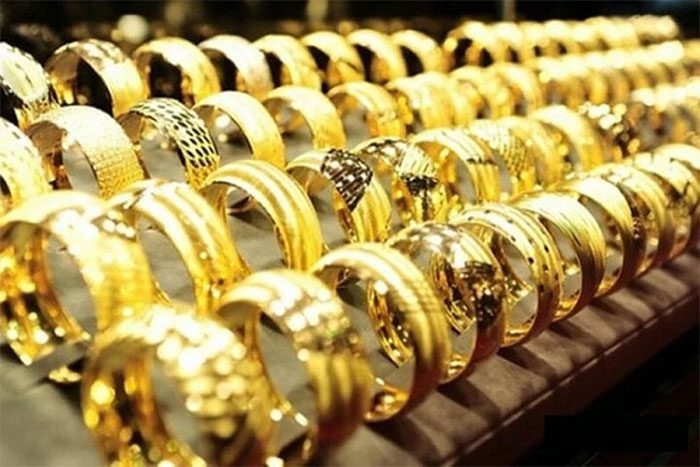Gold-plated jewelry has become increasingly popular in jewelry stores today, yet not many people truly understand this type of gold.
Understanding Gold-Plated Jewelry
Gold-plated jewelry is actually an alloy made from various metals such as copper, iron, nickel, and lower-quality gold, which is then coated with a thin layer of gold (either 18K or 24K) on the outside. This process gives the accessories a shiny, eye-catching, and luxurious appearance that attracts customers’ attention.
Gold-plated jewelry is highly durable and hard. The craftsmanship of gold-plated products is exquisite and aesthetically pleasing, rivaling that of real gold jewelry. The cost of gold-plated items depends on the thickness of the gold layer and the craftsmanship involved, but generally, they are cheaper than real gold.
Common Types of Gold-Plated Jewelry
Due to the ease of crafting, the market for gold-plated jewelry offers a variety of styles and designs. Below are some popular types of gold-plated jewelry:
- Gold-Plated Rings: These rings are intricately crafted in either modern or traditional styles and may feature gemstones to enhance their aesthetic value.

Intricately crafted gold-plated rings. (Illustrative photo).
- Gold-Plated Necklaces: With a wide range of styles and designs, gold-plated necklaces cater to various customer demographics, from young adults to seniors.
- Gold-Plated Earrings: Many people choose gold-plated earrings to help them change their style daily. The designs often mimic those of major brands, with comparable intricacy.
- Gold-Plated Bracelets: These bracelets are also crafted with great precision to meet the needs of a diverse clientele.
Simple Ways to Distinguish Real Gold from Gold-Plated Jewelry
Gold-plated products are widely available on the market with high craftsmanship, making it difficult for consumers to discern them from real gold. Many customers have fallen victim to scams, purchasing gold-plated items believing they are buying real gold.
Here are some ways to differentiate gold-plated jewelry from real gold:
- Check the Surface of the Gold: Buyers can use a magnifying glass to inspect the gold surface. Real gold has a smooth surface that is free from bubbles and imperfections. Unlike gold-plated jewelry, real gold does not have any dents or irregularities.
- Real gold is stamped with numbers such as 10K, 18K, or 24K and includes a brand logo.
- Check for Color Change with Friction: Real gold will shine more when rubbed and will not scratch easily. Conversely, gold-plated jewelry will change color when subjected to friction or impact.
- Magnet Test: Real gold is not magnetic, while gold-plated jewelry containing many impurities will stick to a magnet.
- Fire Test: Real gold will not oxidize or turn black when exposed to high temperatures, while gold-plated items may become discolored or melt. However, this method is difficult to perform while shopping for gold.
- Sound Test: When struck together or dropped on a hard surface, real gold will not produce a ringing sound. In contrast, gold-plated jewelry will resonate loudly.
- The Color of Gold-Plated Jewelry resembles that of real gold, but over time, it may tarnish to reveal the color of the underlying alloy.





















































